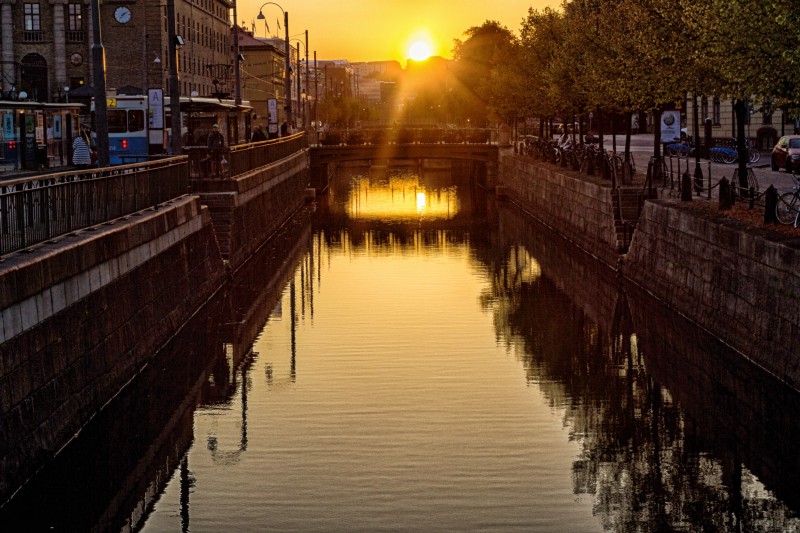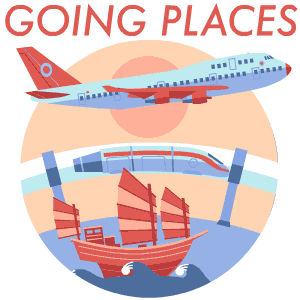

Canals seem like a quaint relic of bygone days. While inland water transport was once crucial to commerce and industry throughout the world, it’s long since been supplanted by faster and cheaper-to-maintain railways and highways. Today, many canals in the West have been abandoned, or are used solely for recreation.
But a few large-scale ship canals are still vital to the world’s trade infrastructure–and becoming ever more vital as globalization spreads economic power more evenly around the planet. Here are five of the world’s most remarkable canals, from ancient times to the present day.

1. Suez
The Suez Canal we know today was not the first built in the region. Many Egyptian pharaohs constructed west-east canals to facilitate travel from the Nile River to the Red Sea, including some of the first navigable locks. The modern Suez Canal opened in 1869, after 10 years of construction, under French and Egyptian control. It had an immediate and dramatic effect on world trade, and also played an important role in increasing European colonization of Africa.
Today, the importance of cargo ships in global trade means that the Suez Canal is no longer large enough to cope with demand. So a second lane, which allows for much larger vessels and even two-way traffic, is being built alongside part of the existing canal. Several container ships have already successfully navigated it as part of a trial run, and the new canal is due to open formally on August 6, 2015.

2. Panama
No canal has had more influence on the modern world than the Panama Canal. Not only does it account for a full five percent of world trade today, but it was predated by an ill-fated 15th-century attempt to establish a similar overland route by an independent Scotland. This failure almost bankrupted the country, forcing it to join in political union with England and form Great Britain.
Inspired by Suez’s success, the French undertook another abortive attempt to construct a trade route–this time a waterway–across the isthmus of Panama in 1881. But it wasn’t until 1914, after 10 years of intense construction and the deaths of some 25,000 workers, that the United States completed the modern canal–a feat considered to be an engineering wonder of the world. Like Suez, the modern canal is handling far more traffic than it was ever designed to do, so several other canals have been proposed for the region–including one currently under construction through neighboring Nicaragua.

3. The Grand Canal
The longest canal in the world runs for 1,104 miles between Beijing and Hangzhou. China’s Grand Canal was completed during the Sui dynasty between 581 and 618 A.D., but some sections date back to the 6th century B.C. when they were used for trading and army supply. By the year 785, records show that nearly 364,000 pounds of grain were shipped annually along its length, and it played a vital role in culturally and politically unifying the north and south of the country.
Today, it’s a UNESCO World Heritage site but is still widely used for transportation and commerce. China’s government has rolled restoration of the canal into a multi-decade infrastructure project to redistribute water from the wet south of the country to the arid north, mimicking the flow of culture and politics along the canal’s length in centuries past.

4. Corinth
The narrow strip of land that separates the Peloponnese peninsula from the mainland of Greece has been a thorn in the side of mariners for millennia. In the 7th century B.C., the ruler Periander attempted to cut a canal through but abandoned it over technical difficulties and the great expense of the project. The Roman leaders Julius Caeser and Caligula both mounted similar attempts but were each assassinated before their plans could be realized. Roman Emperor Nero was the first to begin construction, but his attempt only progressed about 2,300 feet before he too died and the project was abandoned.
It wasn’t until centuries later, after Greece gained formal independence from the Ottoman Empire in 1830, that a canal was finally completed. Suez was again an inspiration, and French entrepreneurs were charged with the project–successfully completing it in 1893 after 11 years of hard work amid geological and financial difficulties. Due to its narrowness, the need to close it periodically to clear landslides, and the disruption of the First and Second World Wars, it was never a financial success. Today, however, it’s a major tourist attraction.

5. Kennet and Avon
Before Britain’s railways were built in the 19th century, the only way to move goods in bulk from Bristol to London across southern England was a hazardous sea journey during which ships were vulnerable to stormy weather and attacks from French warships. In 1718, work commenced to link Reading and Newbury together with a canal, followed by a waterway between Bristol and Bath in 1727. The first cargo of “Deal boards, Pig-Lead, and Meal” reached Bath in December of that year.
But the full canal wasn’t joined up until 1810, after 16 years of construction that included tunnels, locks, aqueducts, and pumping stations. For 30 years, business boomed–but the opening of the Great Western Railway in 1841 coopted much of the canal’s traffic. Icebreaking ships with strengthened hulls and the power to push through and clear ice stopped their travel in 1857, and a public order prohibited any traffic on the canal at night by 1861. In 1877, the canal recorded its first loss and never cleared any profit again.
Remarkably, it was never closed. Instead, the Ministry of Transport repeatedly charged the Great Western Railway with improving maintainence during the early 20th century. Pleasure boats were beginning to use the canal, and by 1962 a sizeable grant for restoration secured its future. Today, it’s a popular tourist destination for boating, canoeing, fishing, walking, and cycling, and plays a vital role in wildlife conservation.


How We Get To Next was a magazine that explored the future of science, technology, and culture from 2014 to 2019. This article is part of our Going Places section, which looks at the impact of transportation technology on the modern world. Click the logo to read more.
